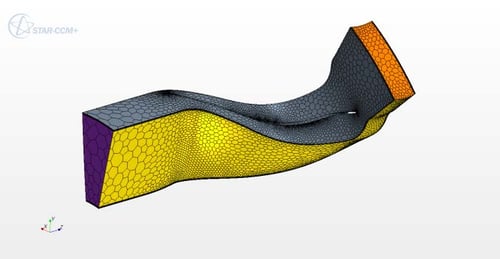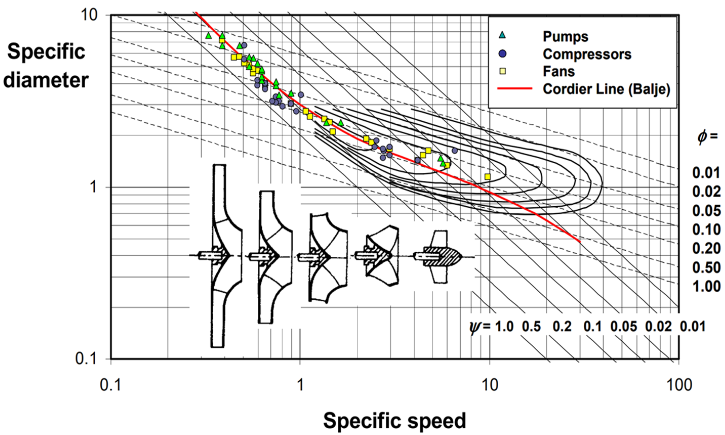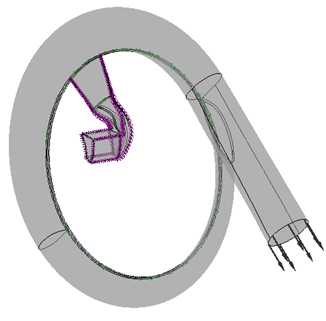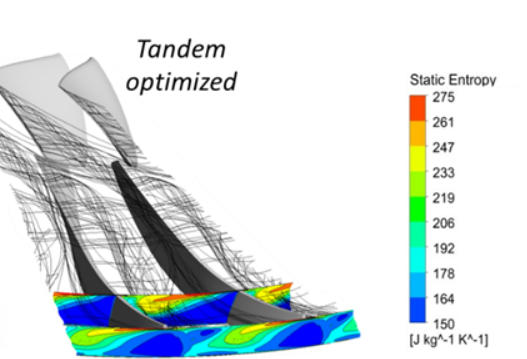The design of centrifugal compressors for variety of applications such as turbochargers, oil and gas or helicopter engines and auxiliary power units for aircrafts poses difficult trade-offs between aerodynamic performance and structural integrity of the compressor.
This is particularly the case for turbocharger applications, where there are important requirements to broaden the stable operating range of the compressor, improve its efficiency at certain pressure ratios and yet maintain or improve the structural integrity of the design with minimum inertia.
In order to meet these contrasting requirements, a design strategy is required that can consider a large part of the design space and provide information on tradeoffs between contrasting design objectives. One possibility is to couple automatic optimization with direct design approach so that the design space is explored more systematically.
In such an approach the rotor geometry is parameterized by using blade shape related parameters, such as blade angles. Typically between 24-59 design parameters are required to represent the impeller. Such a large number of design parameters will then require a large population size and hence many thousands of multipoint computations if an evolutionary optimization method is used.

Fig. 1. Typical Computational Mesh used for CFD.
Even using surrogate models such as response surface or neural networks will require a large initial population. Furthermore, these surrogate models will not provide accurate response surfaces, to be used for optimization, when large number of design parameters are used.
An alternative approach is to use an inverse design based optimization strategy as used for multi-objective aerodynamic optimization. The advantage of such an approach is that a large design space can be explored with a small number of design parameters. Such an approach can be coupled with Design of Experiments method and appropriate surrogate models such as Response Surface Model or Kriging, for further details.
One major advantage of the inverse designed based approach is that all the blade geometries generated in the design matrix will satisfy the specified compressor specific work at the specified mass flow rate, something that is difficult to control with direct design optimization.
This will make it easier to achieve more accurate response surface, which can then be used for rapid evaluation of multi-disciplinary/multiobjective performance parameters required for optimization.
This approach can make multi-disciplinary optimization a practical reality that can be used routinely by designers during the turbomachinery design process.
For this purpose a commercially available 3D inverse design method, TURBOdesign1, will be used. In this
inverse design method the blade geometry is computed for a specified distribution of blade loading, which is the meridional derivative of the tangentially mean swirl velocity and is directly related to the blade bound circulation.
In this method, in addition to the blade loading the normal thickness distribution is specified and hence it is possible to ensure structural integrity of the design. The method has already been applied to the design of industrial centrifugal compressor impellers, where simple design guide-lines have been developed for suppression of secondary flows and the resulting jet/wake flow effects at the impeller exit. This method has also been applied to the design of compact high performance vaned diffusers for centrifugal compressors and industrial compressors with splitters, and high pressure ratio transonic centrifugal compressors.

Fig. 2. 3D Geometry of the Optimized Blade.
In this paper, for the first time, a commercially available solution, compatible with industrial development times, is presented for 3D multi-disciplinary and multi-point design optimisation of turbomachinery blades.
This is made possible by seamless communication between TURBOdesign1 and TURBOdesign optima for 3D inverse design based optimization, Abaqus for FEA and structural analysis and STAR-CCM+ for CFD computations.
Mehrdad Zangeneh
Mehrdad Zangeneh is Founder and Managing Director of Advanced Design Technology and professor of Thermofluids at University College London.
View All Articles






Share This Post